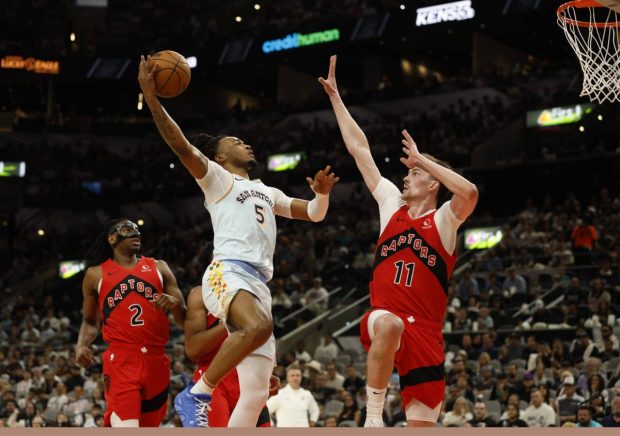BALTIMORE — Redemption won’t come all at once for Devin Williams. But on Monday in Baltimore, the beleaguered Yankees reliever took a modest step in the right direction.
A clean eighth inning, in a 4-3 Yankees loss, offered Williams a moment of normalcy in a season that has been anything but simple. Upon conjuring a harmless pop-up to finish his scoreless frame, Williams strolled back to the bench alongside his teammates, not apart from them. A wave of high-fives and “atta boys” greeted him in the dugout.
It was the type of dominant, ho-hum scene Yankees brass must’ve envisioned when they traded for Williams in December. Armed with a slow heartbeat and an untouchable, unicorn changeup dubbed “The Airbender,” Williams developed into a model of late-inning brilliance in Milwaukee. And so the 30-year-old, who is set to hit free agency this upcoming winter, arrived in the Bronx with a laundry list of accolades — two All-Star selections, two Reliever of the Year Awards, a World Baseball Classic nod — and the expectations to match.
Advertisement
But Williams’ first month as Yankees closer was a tough scene: 10 earned runs in his first eight innings, an ERA north of 11 and a precipitous drop in strikeout rate. Predictably, those struggles incited wrath and ire from a demanding Yankees fan base, one spoiled by two decades of Mariano Rivera, the greatest closer in baseball history.
A blown save against Toronto on April 25, in which Williams surrendered three runs and did not record an out, proved to be the final straw. Two days later, Yankees manager Aaron Boone announced that he would be removing Williams from the ninth-inning role in favor of righty Luke Weaver and his sparkling 0.00 ERA.
Williams, calm, his voice even, responded to the crushing news on Sunday with a poignant self-awareness.
Advertisement
“With the way things have gone recently, it’s not really a shock to me, you know?” he told reporters. “Being the closer is a position you have to earn, you know? And you have to keep earning it to continue to be in that role. Lately, I haven’t been doing it. You work for years to get to that point — to have that taken away from you, it’s not a fun feeling at all. But I can’t say it’s undeserved.”
That the metrics on Williams’ fastball-changeup combo are generally in line with his peak years is both encouraging and frustrating. The airbender still dances, even if the whiff rate on the pitch is down 15%. The movement profile, the raw stuff — that’s all there. The problem appears to be location. Too often this season, Williams has left his signature pitch over the horizontal middle of the plate, where hitters can do damage.
He’s also falling behind in counts and issuing too many walks. While free passes have always been an area of concern for Williams, in the past he missed enough bats to bail himself out. In Milwaukee, he consistently located the change on the low corners and below, leading to a ton of chase. In New York, he has been leaving pitches in hittable zones — and paying for it.
Advertisement
Boone echoed the faith in Williams’ abilities, telling reporters including MLB.com’s Bill Ladson that he believes Williams has “all the equipment to do this at an elite level.” Finding a way to revitalize Williams, so that he can re-earn the closer role in time, is quite obviously in the Yankees’ best interest. Because for the first five seasons of his career, Williams was dynamite, borderline automatic. From 2020 through 2024, no MLB pitcher had a lower batting average against (.144). The only qualified reliever with a lower ERA was Cleveland’s Emmanuel Clase (1.62 to 1.70), and only Mets flame-thrower Edwin Díaz had a higher strikeout rate (41.7% to 40.8%).
But as Williams inched closer to free agency, a trade away from the only organization he’d ever known felt inevitable. The low-budget Brewers rarely let valuable players walk away on the open market for nothing. Instead, predictably, Milwaukee shipped their all-world closer to the Bronx for established lefty starter Nestor Cortes and a promising young infielder named Caleb Durbin. The final pitch Williams threw as a Brewer was easily his most painful: an elevated changeup that resulted in the game-ending, series-clinching, three-run blast from Mets slugger Pete Alonso.
To be fair, conversations about whether Williams is ultimately “built” for the Bronx feel premature, even with his rocky start and subsequent demotion. The past six months of Williams’ life have been marked by upheaval and transition. Transition from Milwaukee to New York, from an easy drive to a long subway ride, from a docile fan base to an impatient one, from two beat writers to 15, from a half-decade of familiarity to a whole new world. Add to that the birth of his and his fiancee’s first child, and it’s easy to paint a sympathetic picture of a human being grappling with change.
Advertisement
Williams is introspective, honest, contemplative, emotionally intelligent, a chiller’s chiller. Unlike many ballplayers, he pauses to think, sometimes for a while, before he responds to a question. He also exudes a certain calm that stands out in a sporting world full of unyielding chaos and loud voices and roaring bravado. Baseball has changed his life, but it’s clear that Williams doesn’t let the sport entirely define who he is. It’s a mentality that, during his outstanding career, has served him quite well and should continue to do so as he regains his footing.
And he is far from the first high-profile reliever to scuffle with a new team. His former Brewers teammate Josh Hader, for instance, also an elite reliever, was abysmal right after being dealt to San Diego at the 2022 deadline. Through his first 10 outings as a Padre, Hader had an ERA north of 13 and was removed from the closer role in late August. But by October, he’d regained his form to help lead San Diego to the NLCS. He signed a massive contract with the Astros one year later and remains one of the game’s best bullpen arms.
Something similar feels possible, even probable, for Williams. His straightforward, uneventful outing Monday was a small reminder that a path to redemption — and back to the closer role — exists. Yes, his April struggles were ugly enough for the Yankees to temporarily change his job description. But it’s far too early to label him as anything other than a talented arm with elite stuff who should eventually find his way back.
It won’t be all at once. But Williams, the Yankee, is still very much capable of greatness.
This news was originally published on this post .










Be the first to leave a comment